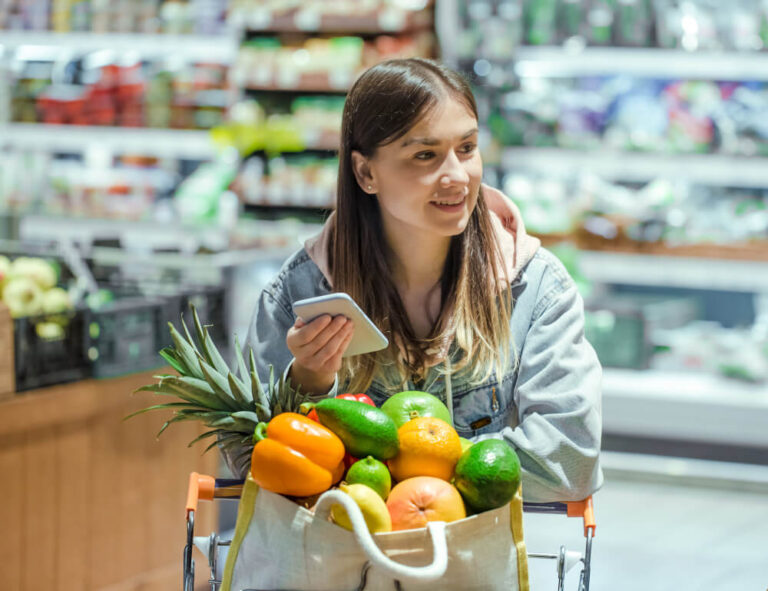This article explores the distinctions between Consumer Packaged Goods (CPG) and Fast-Moving Consumer Goods (FMCG), focusing on how these differences influence technology adoption within each sector.
Introduction to CPG and FMCG
When you walk into a grocery store, you’re surrounded by two types of products: those that fly off the shelves in a matter of days and those that sit comfortably for weeks or months. This is the world of CPG vs FMCG—two categories that dominate the consumer goods industry but operate in vastly different ways.
Consumer Packaged Goods (CPG) refer to frequently replaced products, such as toiletries, cleaning supplies, and packaged foods. On the other hand, Fast-Moving Consumer Goods (FMCG) are items with an even shorter shelf life and higher turnover, like fresh produce, dairy, and snacks. While both are essential to our daily lives, their differences in purchase frequency, shelf life, and consumer behavior shape how companies approach everything from production to marketing.
Key Differences Between CPG and FMCG
At first glance, CPG and FMCG might seem interchangeable, but dig a little deeper, and you’ll find stark contrasts. These differences aren’t just academic—they influence how businesses operate, market, and innovate.
Purchase Frequency and Consumption Rate
One of the most noticeable differences is how often consumers buy these products. FMCG items, like bread or milk, are purchased almost daily or weekly. They’re the staples we can’t live without. CPG products, however, like shampoo or laundry detergent, are bought less frequently but still regularly.
This disparity affects everything from inventory management to supply chain logistics. For FMCG companies, the challenge is keeping up with rapid demand without overstocking perishable items. CPG companies, meanwhile, focus on ensuring their products are always available but not so abundant that they gather dust on shelves.
Shelf Life and Product Turnover
Shelf life is another critical factor. FMCG products often have a short lifespan—think fresh produce or baked goods. This means companies must prioritize efficient distribution to avoid spoilage. CPG items, like canned goods or cleaning products, have a longer shelf life, allowing for more flexibility in storage and transportation.
The turnover rate also impacts retail strategies. FMCG retailers often use promotions and discounts to move products quickly, while CPG brands might focus on building brand loyalty to ensure repeat purchases.
Pricing and Profit Margins
In terms of pricing, FMCG products are typically lower in cost but higher in volume. This means slim profit margins per unit but significant revenue overall. CPG products, on the other hand, often have higher price points and margins, but they rely on consistent consumer loyalty to drive sales.
Understanding these differences is crucial for businesses aiming to optimize their strategies. For instance, FMCG companies might invest in technologies that streamline distribution, while CPG brands could focus on tools that enhance customer engagement.
Impact of Product Characteristics on Technology Adoption
The unique characteristics of CPG and FMCG products influence business strategies and shape how these industries adopt technology. From production lines to marketing campaigns, technology plays a pivotal role in addressing each sector’s specific challenges.
Technology in Production and Supply Chain Management
In the FMCG sector, where speed and efficiency are paramount, automation and AI are game-changers. For example, predictive analytics can help companies forecast demand for perishable goods, reducing waste and ensuring fresh products are always available.
With their longer shelf life and less frequent purchases, CPG companies often focus on optimizing production processes. Robotics and IoT-enabled devices are increasingly used to monitor manufacturing lines, ensuring consistent quality and reducing downtime.
Marketing and Consumer Engagement Technologies
When it comes to marketing, the difference between CPG and FMCG becomes even more apparent. FMCG brands often rely on digital platforms to drive impulse purchases. Think of social media ads promoting a new snack or a limited-time discount on your favorite beverage.
CPG brands, meanwhile, invest in personalized marketing and loyalty programs. With fewer but more significant purchases, building a strong relationship with consumers is key. Technologies like CRM systems and data analytics help these brands understand customer preferences and tailor their messaging accordingly.
Case Studies: Technology Adoption in CPG and FMCG Companies
Let’s look at some real-world examples. A leading FMCG company, like Coca-Cola, uses AI-powered vending machines to analyze consumer behavior and optimize product placement. On the CPG side, Procter & Gamble leverages big data to predict trends and develop new products that resonate with their audience.
These examples highlight how understanding the CPG and FMCG differences can lead to innovative solutions that address industry-specific challenges.
Challenges in Technology Adoption
Of course, adopting new technologies isn’t without its hurdles. CPG and FMCG companies face challenges like integrating new systems with existing infrastructure, managing costs, and training employees.
The rapid pace of change can make it difficult for FMCG companies to keep up. CPG brands, meanwhile, must balance innovation with maintaining the trust of their loyal customer base.
Future Trends in Technology for CPG and FMCG
Emerging technologies like AI, machine learning, and IoT are set to revolutionize both industries. Imagine smart shelves that automatically restock themselves or AI-driven marketing campaigns that predict what you’ll want to buy before you even know it.
These advancements promise to address current challenges and open up new growth opportunities.
Conclusion
In the world of consumer goods, understanding the difference between FMCG and CPG is more than just an academic exercise—it’s necessary for anyone looking to stay competitive. These differences shape how companies operate and innovate, from purchase frequency to shelf life.
As technology continues to evolve, the ability to adapt will be crucial. Whether in the fast-paced world of FMCG or the steady realm of CPG, embracing the right tools and strategies can make all the difference.
So, the next time you’re in a grocery store, take a moment to appreciate the complex dance of technology and strategy behind every product on the shelf. It’s a fascinating world, and it’s only getting more interesting.

